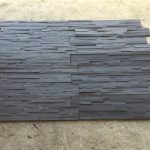Exploring the Rich History and Artistry of Mexican Cultured Stone

Introduction:
Mexican cultured stone, also known as faux stone or manufactured stone, is a material that has been used for centuries in Mexican architecture and design. This versatile building material has gained popularity not only in Mexico but also around the world for its aesthetic appeal, durability, and cost-effectiveness. In this article, we will delve into the rich history, traditional techniques, modern applications, and cultural significance of Mexican cultured stone.
History of Mexican Cultured Stone:
The history of Mexican cultured stone dates back to ancient times when indigenous civilizations such as the Aztecs, Mayans, and Toltecs used natural stones to construct their temples, pyramids, and other structures. These civilizations developed advanced techniques for quarrying, shaping, and setting stones, which laid the foundation for the use of stone in Mexican architecture.
During the Spanish colonial period, European settlers brought their own architectural styles and building materials to Mexico, including limestone, marble, and granite. However, the indigenous populations continued to use local stones and developed methods to mimic the appearance of natural stone using locally available materials.
The modern era saw the rise of manufactured stone products as a cost-effective alternative to natural stone. Mexican artisans and craftsmen began producing cultured stone using a combination of cement, aggregates, and mineral oxides to create a wide range of colors, textures, and finishes that closely resemble natural stone.
Traditional Techniques and Artistry:
Mexican cultured stone is produced using a combination of traditional techniques and modern technology. The process begins with the selection of raw materials such as sand, cement, and pigments, which are mixed together to create a slurry. This slurry is poured into molds that are designed to replicate the texture and appearance of natural stone.
Artisans then use hand tools and special techniques to shape, carve, and finish the stone before it is cured and dried. Once the stone is fully cured, it is carefully removed from the molds and inspected for quality before being packaged and shipped to customers.
One of the key aspects of Mexican cultured stone is the artistry and craftsmanship that goes into its production. Skilled artisans use their expertise and creativity to create unique designs, patterns, and textures that reflect the rich cultural heritage of Mexico. From rustic cobblestone to intricate carvings, Mexican cultured stone offers a wide range of options for architects, designers, and homeowners.
Modern Applications and Benefits:
Mexican cultured stone is a versatile building material that can be used in a wide range of applications, both indoors and outdoors. It is commonly used for cladding exterior walls, fireplaces, columns, and entryways to add a touch of elegance and sophistication to any space. Additionally, cultured stone can be used for interior accent walls, backsplashes, and flooring to create a warm and inviting atmosphere.
One of the key benefits of Mexican cultured stone is its cost-effectiveness compared to natural stone. Manufactured stone is more affordable and easier to install, making it a popular choice for homeowners and builders who want the look of natural stone without the high cost and maintenance requirements.
In addition to its affordability, Mexican cultured stone is also highly durable and weather-resistant, making it suitable for both indoor and outdoor use. It requires minimal maintenance and can withstand the elements, making it an ideal choice for homes in various climates.
Cultural Significance and Symbolism:
Mexican cultured stone holds cultural significance and symbolism that reflects the rich heritage and traditions of Mexico. In Mexican architecture, stone has always been revered for its strength, durability, and timeless beauty. Paver stepping stones for durable pathways of stone in buildings and structures symbolizes stability, permanence, and a connection to the earth.
The intricate carvings, patterns, and textures found in Mexican cultured stone are often inspired by traditional motifs and designs that have been passed down through generations. These decorative elements reflect the craftsmanship and artistry of Mexican artisans and serve as a reminder of the country's rich cultural legacy.

Moreover, Mexican cultured stone is often used in religious and spiritual contexts to create sacred spaces and shrines. The use of stone in temples, churches, and altars symbolizes reverence, purity, and spiritual enlightenment, connecting people to their faith and heritage.
Conclusion:
Mexican cultured stone is a testament to the artistry, craftsmanship, and cultural heritage of Mexico. From its ancient origins to its modern applications, cultured stone continues to be a popular building material that embodies the beauty and richness of Mexican architecture and design. Whether used in traditional haciendas, modern homes, or commercial buildings, Mexican cultured stone adds a touch of elegance and sophistication to any space. Its durability, affordability, and versatility make it an ideal choice for architects, designers, and homeowners looking to create timeless and captivating environments.
